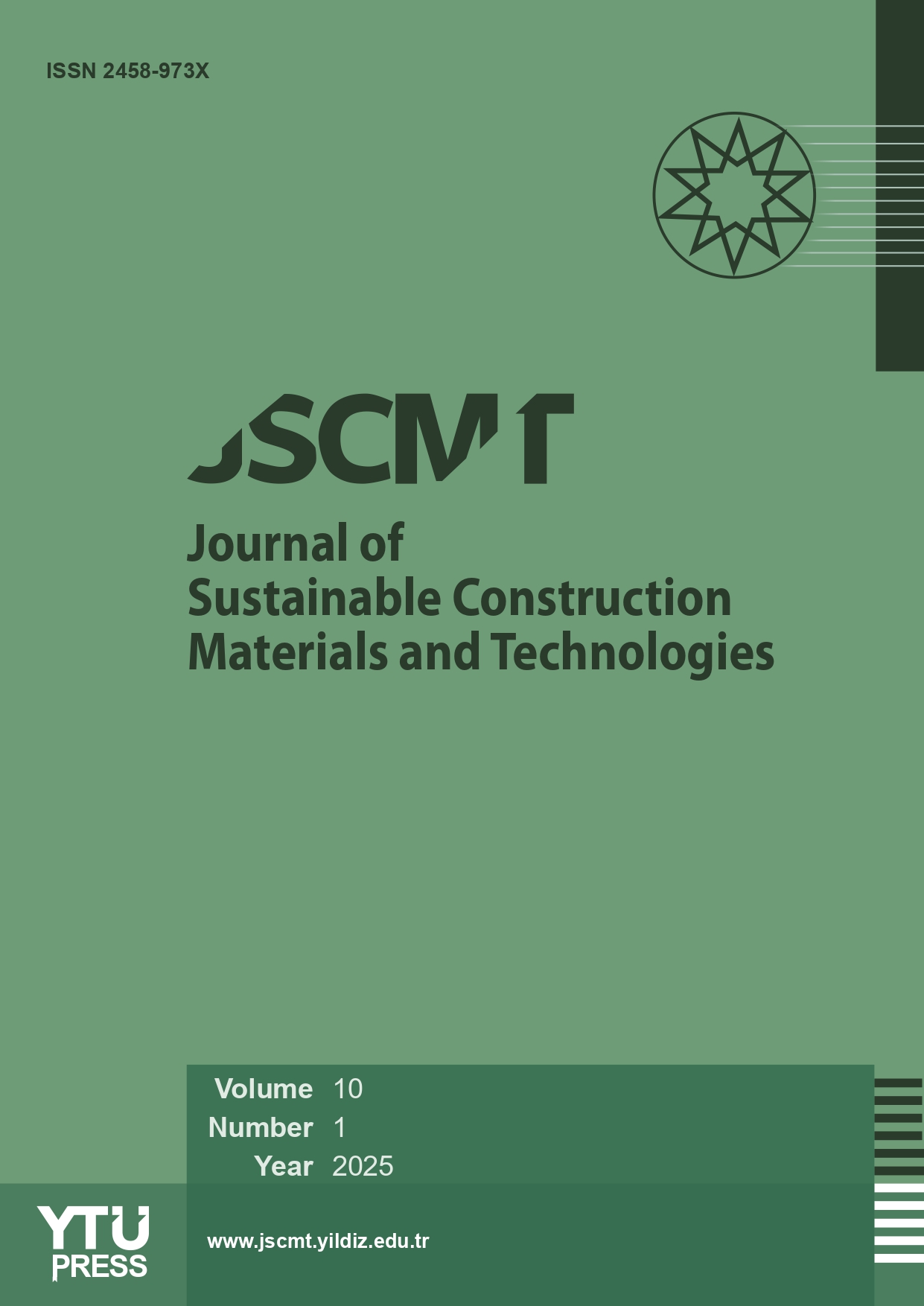2Department of Civil Engineering, Erciyes University, Kayseri, Türkiye
3Department of Construction, Kayseri University, Vocational School of Technical Sciences, Kayseri, Türkiye
Abstract
Geopolymer concrete (GPC) is obtained by activating industrial wastes such as fly ash with chemical liquids such as sodium hydroxide (NaOH) and sodium silicate (Na2 SiO3). In order
to use environmentally friendly GPC obtained from industrial wastes instead of Portland cement concrete (OPC), its behavior in structural elements is important and should be investigated
in detail. Load-displacement characteristics, flexural and shear stiffnesses, and crack development of samples were obtained by numerical analysis. The GPC beams to be an alternative to OPC beams, their mechanical properties and fracture modes must be at least as much as OPC. As a result of the analyses, it was determined that the 110x20x15 cm GPC beams with compression reinforcements of 2Φ8 and tension reinforcements of 2Φ8, 3Φ14 and 2Φ18, respectively, showed similar flexural, shear and crack development with OPC beams. Simulations of GPC beams were made up to the breaking point, contributing to understanding its behavior. The ultimate load for both OPC and GPC beams in the FEM model was 45 MPa, while in the experimental model, the OPCB was 55 MPa and the GPCB was 60 MPa. While the first crack started at 1 mm in the OPCB-FEM model, the GPCB-FEM model showed a more elastic behavior, and the first crack started after 3.5 mm displacement. The load-displacement results for 2Φ8 compression and 3Φ14 tensile reinforced beams contain closer results in FEM and experimental. The ultimate load states are between 160 MPa and 180 MPa, but the maximum strengths of OPCBs are slightly higher. After 7.5 mm, crack formation continued to increase. Maximum strength in beams with 2Φ8 pressure and 2Φ18 reinforcement is in the range of 175–185 MPa. Although the values are very close to each other, it seems that they did not exceed the strengths of the previous 3Φ14 reinforced beams. On the other hand, it is seen that the plastic deformation of GPCBs starts from 7.5 mm, while OPCBs start after 10 mm. Observing the load-displacement graphs and the mobility of concrete and reinforcement, it can be said that the yield in the steel reinforcement and the crack development in the beams are simultaneous, and the crack development in GPCs starts a little earlier than the yield of the steel reinforcement.
















